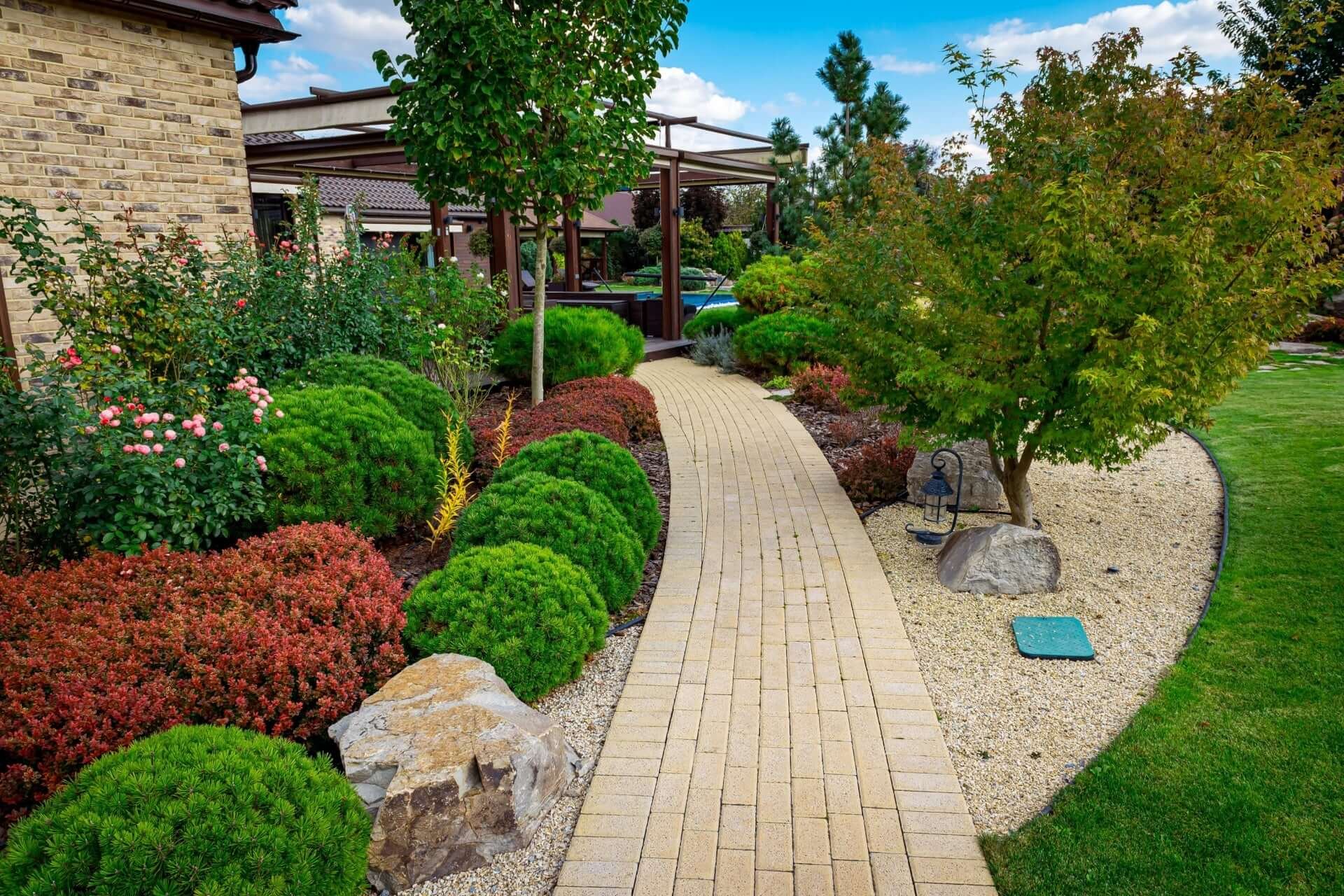Creating a Zen Garden
Gardening a Zen garden, Japanese rock garden, or a dry landscape garden is a centuries-old art that is meant to make a space in the outside world more harmonious and quiet. They are gardens meant to foster mindfulness, meditation, and reflection. Although traditionally thought of as the traditional Japanese garden, Zen gardens can be replicated in almost any location and style and can be a rich addition to any garden. In this how-to, we'll cover the foundations, design rules, and how-tos for building a Zen garden where you can feel peaceful and connected to nature.
1. Where to Put Your Zen Garden: This is the most important part. If you can find somewhere that is quiet and away from everything, that is better. It may be small or large but will still have a space within the area you choose. Think about the amount of sunlight, accessibility and ambience of the area. Your backyard, a rooftop terrace, even an interior room can become a Zen garden.
2. What is the Goal: Prior to planning your Zen garden, you need to define what the goal is. What do you want to do with this space? Is it a space to meditate and rest, an area to centre your surroundings, or where you can use your imagination? The purpose will set your design course and allow you to build a garden for the purpose.
3. Get Inspiration: Study and get Inspiration from both traditional Japanese Zen gardens and contemporary versions. Read books and internet, and go visit parks to see the components and styles. As long as you remain in Zen style, you can put your own thought and interpretations on the design.
4. Stay Simple: Keeping things simple is the heart of Zen garden design. Start by clearing the chosen space of clutter or distractions. Wipe out the area of weeds, leaves, and other things that might interrupt the peace you seek. There needs to be a blank page to produce calm.
5. Select Your Favorites: Zen gardens will typically consist of certain elements combined with one another to make a calm space. These elements may include:
Sand or gravel: Often symbolic of water, rakes of gravel or sand are the building blocks of the garden. They are rock or stone, mountain or island, and are placed to create equilibrium and harmony. Garden Plants: Zen gardens tend to be more minimalist, but there are plants like mosses, bamboo, Japanese maples, and other plants that can make a garden beautiful. Bridges or paths: Wooden bridges or stepping stones can create motion and journey in the garden. Lighting or statues: Old-fashioned lanterns or sculptures of today can be used as focuses and visual interest.
6. Figure out the Structure: Plan the placement and order of these objects. Asymmetries and irregularity are favored in Zen gardens to create a natural, balanced effect. Try different formats until you have a piece that is right for your vision and goal.
Let's Get Practical And Learn The Real-Life Process Of Having Your Zen Garden
Install the soil: Make sure the area is flat and free of roots or any other debris. Sand or gravel (if it's not all the same): spread out evenly and rake to simulate waves of water.
Arrange the stones: Place the stones or rocks in the garden. Start with the big rocks as vocals and then scale them up. Partially submerged rocks must look as though they come straight up.
Selection of plants: If you do add plants, choose those that thrive in your environment and do not require much care. Weave them sparsely - keep it Simple and Balance.
Create paths: If you are putting in paths or stepping stones, set them out so that visitors can contemplate walking through the garden. Make sure the trajectories match up with the design.
Hang lanterns or sculptures: If you want, put lanterns or sculptures where you want to give them emphasis or to bring some beauty to your Zen garden.
8. Keep a Zen Garden: A Zen garden is never done. Rake the gravel or sand regularly so the ripples can be maintained, and there's peace. Prune and groom any vegetation so the garden looks tidy and balanced. Do not leave garbage or leaves that could disturb the garden's peace.
9. Mindful Gardening: Gardening can also be a meditation. When you're cleaning up your Zen garden, use a mind that is present in each step: raking the sand, watering the plants, snipping the moss. If you practice these activities to your fullest, you'll become closer to the garden and quieter.
10. Design Your Zen Garden: Traditional Zen gardens do have rules and principles, but feel free to make the space your own. Look for little things that have meaning to you - maybe a stone that has an inscription, a secret message.
11. Reflect and meditate: One of the main functions of a Zen garden is for meditating. Sit in your garden for a while, listening to the weather, the movement of leaves, and the contrast of sunlight and dark. Be guided to inner peace and attention by the serenity of the garden.
12. Change and Develop: As the seasons shift and your life develops, your Zen garden can too. The garden can be modified by the changes of the world around you, or in the plants or decorations, as your relationship with nature grows stronger and stronger.
Benefits Of A Zen Garden
There is so much more to Zen gardening than beauty. Here are a few of the good reasons to set up and maintain a Zen garden:
Stress Elimination: Zen gardens are very quiet and stress-free place. If you are able to find that kind of quiet, cortisol levels will go down, anxiety will go down, and you will feel calmer.
Mindfulness & Meditation: These gardens are all about mindfulness & meditation, which help one to remain in the moment. Looking after the park, mopping the grass or dirt and looking out at the weather can cultivate serenity and serenity.
Embrace of Nature: Zen gardens are deeply enmeshed with nature, even in the city. You get to play with soil, stones, plants and the seasons, which leads to a deeper love for nature.
Ideas and Self-Development: Creating and customizing a Zen garden is a creative and self-deprecating exercise. You can include a special object, symbol or arrangement that is of personal value so that the garden becomes an expression of you.
Sensation: Zen gardens stimulate the senses, sights, tastes, even ears. The sound of pebbles underfoot, of leaves turning, of the garden elements being visually balanced, energise and invigorate.
Improved Focus and Concentration: You'll have a much better focus and concentration if you regularly garden a Zen garden. It demands vigilance and accuracies, which can enhance productivity and lucidity elsewhere.
Beauty: Zen gardens are aesthetic, simple and uncluttered. They will add visual interest to your outside space, make your outdoor space a draw and conversation piece for visitors.
Wellbeing: The multidimensional aspect of Zen garden maintenance - body, mind, heart - promotes wellness. It gives the possibility of tempering the stresses of the contemporary world with times of solitude and contemplation.
In summary, Zen garden-making is a process of planning, Deconstruction, and Belief. It's about finding a place where you can experience calm, tranquility, and deep intimacy with nature. While keeping with the basic Zen garden design guidelines, do not forget that your garden is your soul and intention. Whether it is an oasis for meditation, a retreat for relaxation, or an expression studio, a Zen garden will make a refreshing change to your outdoor environment and bring you peace, order, and stillness in the noise of the world.
Enhancing the Tranquility: Subtle Elements to Elevate Your Zen Garden
A Zen garden gains its value from its fundamental simplicity. To maintain the garden's tranquility and essence, integrate subtle features that blend perfectly with the existing design. Opt for simple sensory elements and understated additions that work well with the precise raked gravel and carefully placed stones to maintain open-space harmony.
A water feature enhances the Zen garden's serene atmosphere through its calming presence. Soft sounds generated by a small fountain or a recirculating stream provide soothing background noise, masking daily sounds and creating an atmosphere ideal for meditation. The presence of flowing water within the garden reflects the passage of time and renewal, providing an additional dimension to its design concept. Select basic installations that integrate seamlessly with the understated design of the garden so they remain as subtle accents instead of main attractions.
Selecting natural materials strengthens the fundamental Zen aesthetic. Minimalist stone benches and pathways perform dual functions by offering visitors resting places and navigation aids while simultaneously creating understated visual appeal. Stone textures and tones in small accents provide an engaging visual contrast against the meticulously kept gravel. Wooden features like a hidden seating area or miniature pergola create an inviting natural atmosphere. Consider how these materials age because developing a patina contributes to the garden's timeless appearance.
Introduce miniature sculptural pieces that promote introspection without interfering with the garden's primary purpose of maintaining emptiness and flow. One strategically positioned statue or abstract artwork establishes a visual anchor that encourages visitors to stop and contemplate. When integrated into the overall design, a modest stone lantern emits a soft light during evening hours, directing visual focus and creating a relaxing atmosphere. The deliberate lighting choices transform the garden's atmosphere at dusk by accentuating textural details in gravel and stone while creating dynamic shadows across the area.
Wind chimes and bells, which produce peaceful sounds when moved by soft winds, enhance soundscapes. Subtle acoustic elements in the space create a heightened awareness of the present moment and encourage visitors to listen while remaining still. The selected sounds should blend smoothly with the garden environment rather than being loud and intrusive.
Ensure that your personal touches, which showcase your values or spiritual beliefs, blend seamlessly with the overall design. To add personal touches, you can display a modest calligraphy artwork mounted on a wall or hide a motivational quote along a garden pathway. Your choice should always reflect the fundamental principles of mindfulness and simplicity. The deliberate addition of minimal yet meaningful elements ensures that new features blend seamlessly into your Zen garden's cohesive atmosphere while creating a serene environment for meditation and contemplation.
Read more

Composting is an environmentally friendly option to get your trash removed. Composting is an option for organic waste management.

Imagine being surrounded by the beauty of nature, feeling the fresh air on your skin, and creating a stunning outdoor space bursting with life. Gardening is a hobby that offers all of these benefit...





